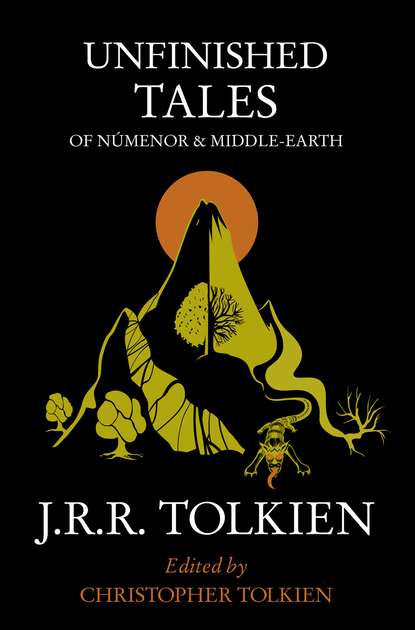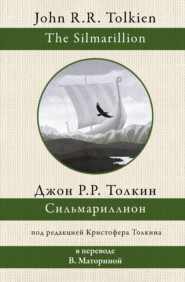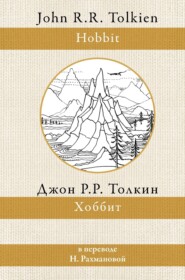По всем вопросам обращайтесь на: info@litportal.ru
(©) 2003-2024.
✖
Unfinished Tales
Автор
Год написания книги
2018
Настройки чтения
Размер шрифта
Высота строк
Поля
Though in form purely a dynastic record, I have included this because it is an important document for the history of the Second Age, and a great part of the extant material concerning that Age finds a place in the texts and commentary in this book. It is a fine manuscript in which the dates of the Kings and Queens of Númenor and of their reigns have been copiously and sometimes obscurely emended: I have endeavoured to give the latest formulation. The text introduces several minor chronological puzzles, but also allows clarification of some apparent errors in the Appendices to The Lord of the Rings.
The genealogical table of the earlier generations of the Line of Elros is taken from several closely-related tables that derive from the same period as the discussion of the laws of succession in Númenor (pp. 268 (#litres_trial_promo) – 9 (#litres_trial_promo)). There are some slight variations in minor names: thus Vardilmë appears also as Vardilyë, and Yávien as Yávië. The forms given in my table I believe to be later.
IV
The History of Galadriel and Celeborn
This section of the book differs from the others (save those in Part Four) in that there is here no single text but rather an essay incorporating citations. This treatment was enforced by the nature of the materials; as is made clear in the course of the essay, a history of Galadriel can only be a history of my father’s changing conceptions, and the ‘unfinished’ nature of the tale is not in this case that of a particular piece of writing. I have restricted myself to the presentation of his unpublished writings on the subject, and forgone any discussion of the larger questions that underlie the development; for that would entail consideration of the entire relation between the Valar and the Elves, from the initial decision (described in The Silmarillion) to summon the Eldar to Valinor, and many other matters besides, concerning which my father wrote much that falls outside the scope of this book.
The history of Galadriel and Celeborn is so interwoven with other legends and histories – of Lothlórien and the Silvan Elves, of Amroth and Nimrodel, of Celebrimbor and the making of the Rings of Power, of the war against Sauron and the Númenórean intervention – that it cannot be treated in isolation, and thus this section of the book, together with its five Appendices, brings together virtually all the unpublished materials for the history of the Second Age in Middle-earth (and the discussion in places inevitably extends into the Third). It is said in the Tale of Years given in Appendix B to The Lord of the Rings: ‘These were the dark years for Men of Middle-earth, but the years of the glory of Númenor. Of events in Middle-earth the records are few and brief, and their dates are often uncertain.’ But even that little surviving from the ‘dark years’ changed as my father’s contemplation of it grew and changed; and I have made no attempt to smooth away inconsistency, but rather exhibited it and drawn attention to it.
Divergent versions need not indeed always be treated solely as a question of settling the priority of composition; and my father as ‘author’ or ‘inventor’ cannot always in these matters be distinguished from the ‘recorder’ of ancient traditions handed down in diverse forms among different peoples through long ages (when Frodo met Galadriel in Lórien, more than sixty centuries had passed since she went east over the Blue Mountains from the ruin of Beleriand). ‘Of this two things are said, though which is true only those Wise could say who now are gone.’
In his last years my father wrote much concerning the etymology of names in Middle-earth. In these highly discursive essays there is a good deal of history and legend embedded; but being ancillary to the main philological purpose, and introduced as it were in passing, it has required extraction. It is for this reason that this part of the book is largely made up of short citations, with further material of the same kind placed in the Appendices.
PART THREE
I
The Disaster of the Gladden Fields
This is a ‘late’ narrative – by which I mean no more, in the absence of any indication of precise date, than that it belongs in the final period of my father’s writing on Middle-earth, together with ‘Cirion and Eorl’, ‘The Battles of the Fords of Isen’, ‘the Drúedain’, and the philological essays excerpted in ‘The History of Galadriel and Celeborn’, rather than to the time of the publication of The Lord of the Rings and the years following it. There are two versions: a rough typescript of the whole (clearly the first stage of composition), and a good typescript incorporating many changes that breaks off at the point where Elendur urged Isildur to flee (p. 355 (#litres_trial_promo)). The editorial hand has here had little to do.
II
Cirion and Eorl and the Friendship of Gondor and Rohan
I judge these fragments to belong to the same period as ‘The Disaster of the Gladden Fields’, when my father was greatly interested in the earlier history of Gondor and Rohan; they were doubtless intended to form parts of a substantial history, developing in detail the summary accounts given in Appendix A to The Lord of the Rings. The material is in the first stage of composition, very disordered, full of variants, breaking off into rapid jottings that are in part illegible.
III
The Quest of Erebor (#litres_trial_promo)
In a letter written in 1964 my father said:
There are, of course, quite a lot of links between The Hobbit and The Lord of the Rings that are not clearly set out. They were mostly written or sketched out, but cut out to lighten the boat: such as Gandalf’s exploratory journeys, his relations with Aragorn and Gondor; all the movements of Gollum, until he took refuge in Moria, and so on. I actually wrote in full an account of what really happened before Gandalf’s visit to Bilbo and the subsequent ‘Unexpected Party’, as seen by Gandalf himself. It was to have come in during a looking-back conversation in Minas Tirith; but it had to go, and is only represented in brief in Appendix A pp. 358 – 60, though the difficulties that Gandalf had with Thorin are omitted.
This account of Gandalf’ s is given here. The complex textual situation is described in the Appendix to the narrative, where I have given substantial extracts from an earlier version.
IV
The Hunt for the Ring
There is much writing bearing on the events of the year 3018 of the Third Age, which are otherwise known from the Tale of Years and the reports of Gandalf and others to the Council of Elrond; and these writings are clearly those referred to as ‘sketched out’ in the letter just cited. I have given them the title ‘The Hunt for the Ring’. The manuscripts themselves, in great though hardly exceptional confusion, are sufficiently described on p. 442 (#litres_trial_promo); but the question of their date (for I believe them all, and also those of ‘Concerning Gandalf, Saruman, and the Shire’, given as the third element in this section, to derive from the same time) may be mentioned here. They were written after the publication of The Lord of the Rings, for there are references to the pagination of the printed text; but they differ in the dates they give for certain events from those in the Tale of Years in Appendix B. The explanation is clearly that they were written after the publication of the first volume but before that of the third, containing the Appendices.
V
The Battles of the Fords of Isen
This, together with the account of the military organisation of the Rohirrim and the history of Isengard given in an Appendix to the text, belongs with other late pieces of severe historical analysis; it presented relatively little difficulty of a textual kind, and is only unfinished in the most obvious sense.
PART FOUR
I
The Drúedain
Towards the end of his life my father revealed a good deal more about the Wild Men of the Drúadan Forest in Anórien and the statues of the Púkel-men on the road up to Dunharrow. The account given here, telling of the Drúedain in Beleriand in the First Age, and containing the story of ‘The Faithful Stone’, is drawn from a long, discursive, and unfinished essay concerned primarily with the interrelations of the languages of Middle-earth. As will be seen, the Drúedain were to be drawn back into the history of the earlier Ages; but of this there is necessarily no trace in the published Silmarillion.
II
The Istari (#litres_trial_promo)
It was proposed soon after the acceptance of The Lord of the Rings for publication that there should be an index at the end of the third volume, and it seems that my father began to work on it in the summer of 1954, after the first two volumes had gone to press. He wrote of the matter in a letter of 1956: ‘An index of names was to be produced, which by etymological interpretation would also provide quite a large Elvish vocabulary.... I worked at it for months, and indexed the first two volumes (it was the chief cause of the delay of Volume III), until it became clear that size and cost were ruinous.’
In the event there was no index to The Lord of the Rings until the second edition of 1966, but my father’s original rough draft has been preserved. From it I derived the plan of my index to The Silmarillion, with translation of names and brief explanatory statements, and also, both there and in the index to this book, some of the translations and the wording of some of the ‘definitions’. From it comes also the ‘essay on the Istari’ with which this section of the book opens – an entry wholly uncharacteristic of the original index in its length, if characteristic of the way in which my father often worked.
For the other citations in this section I have given in the text itself such indications of date as can be provided.
III
The Palantíri (#litres_trial_promo)
For the second edition of The Lord of the Rings (1966) my father made substantial emendations to a passage in The Two Towers, III 11 ‘The Palantír’ (three-volume hardback edition p. 203), and some others in the same connection in The Return of the King, V 7 ‘The Pyre of Denethor’ (edition cited p. 132), though these emendations were not incorporated in the text until the second impression of the revised edition (1967). This section of the present book is derived from writings on the palantíri associated with this revision; I have done no more than assemble them into a continuous essay.
The Map of Middle-earth
My first intention was to include in this book the map that accompanies The Lord of the Rings with the addition to it of further names; but it seemed to me on reflection that it would be better to copy my original map and take the opportunity to remedy some of its minor defects (to remedy the major ones being beyond my powers). I have therefore redrawn it fairly exactly, on a scale half as large again (that is to say, the new map as drawn is half as large again as the old map in its published dimensions). The area shown is smaller, but the only features lost are the Havens of Umbar and the Cape of Forochel.
This has allowed of a different and larger mode of lettering, and a great gain in clarity.
All the more important place-names that occur in this book but not in The Lord of the Rings are included, such as Lond Daer, Drúwaith Iaur, Edhellond, the Undeeps, Greylin; and a few others that might have been, or should have been, shown on the original map, such as the rivers Harnen and Carnen, Annúminas, Eastfold, Westfold, the Mountains of Angmar. The mistaken inclusion of Rhudaur alone has been corrected by the addition of Cardolan and Arthedain, and I have shown the little island of Himling off the far north-western coast, which appears on one of my father’s sketch-maps and on my own first draft. Himling was the earlier form of Himring (the great hill on which Maedhros son of Fëanor had his fortress in The Silmarillion), and though the fact is nowhere referred to it is clear that Himring’s top rose above the waters that covered drowned Beleriand. Some way to the west of it was a larger island named Tol Fuin, which must be the highest part of Taur-nu-Fuin. In general, but not in all cases, I have preferred the Sindarin name (if known), but I have usually given the translated name as well when that is much used. It may be noted that ‘The Northern Waste’, marked at the head of my original map, seems in fact certainly to have been intended as an equivalent to Forodwaith.
I have thought it desirable to mark in the entire length of the Great Road linking Arnor and Gondor, although its course between Edoras and the Fords of Isen is conjectural (as also is the precise placing of Lond Daer and Edhellond).
Lastly, I would emphasize that the exact preservation of the style and detail (other than nomenclature and lettering) of the map that I made in haste twenty-five years ago does not argue any belief in the excellence of its conception or execution. I have long regretted that my father never replaced it by one of his own making. However, as things turned out it became, for all its defects and oddities, ‘the Map’, and my father himself always used it as a basis afterwards (while frequently noticing its inadequacies). The various sketch-maps that he made, and from which mine was derived, are now a part of the history of the writing of The Lord of the Rings. I have thought it best therefore, so far as my own contribution to these matters extends, to let my original design stand, since it does at least represent the structure of my father’s conceptions with tolerable faithfulness.
PART ONE (#ulink_b707ec31-83b3-50ba-b41f-89d40d308fb2)
THE FIRST AGE (#ulink_b707ec31-83b3-50ba-b41f-89d40d308fb2)
I (#ulink_7b3dcf7f-a195-5fa5-8cc5-a0f9dfd78266)
OF TUOR AND HIS COMING TO GONDOLIN (#ulink_7b3dcf7f-a195-5fa5-8cc5-a0f9dfd78266)
Rían, wife of Huor, dwelt with the people of the House of Hador; but when rumour came to Dor-lómin of the Nirnaeth Arnoediad, and yet she could hear no news of her lord, she became distraught and wandered forth into the wild alone. There she would have perished, but the Grey-elves came to her aid. For there was a dwelling of this people in the mountains westward of Lake Mithrim; and thither they led her, and she was there delivered of a son before the end of the Year of Lamentation.
And Rían said to the Elves: ‘Let him be called Tuor, for that name his father chose, ere war came between us. And I beg of you to foster him, and to keep him hidden in your care; for I forebode that great good, for Elves and Men, shall come from him. But I must go in search of Huor, my lord.’














